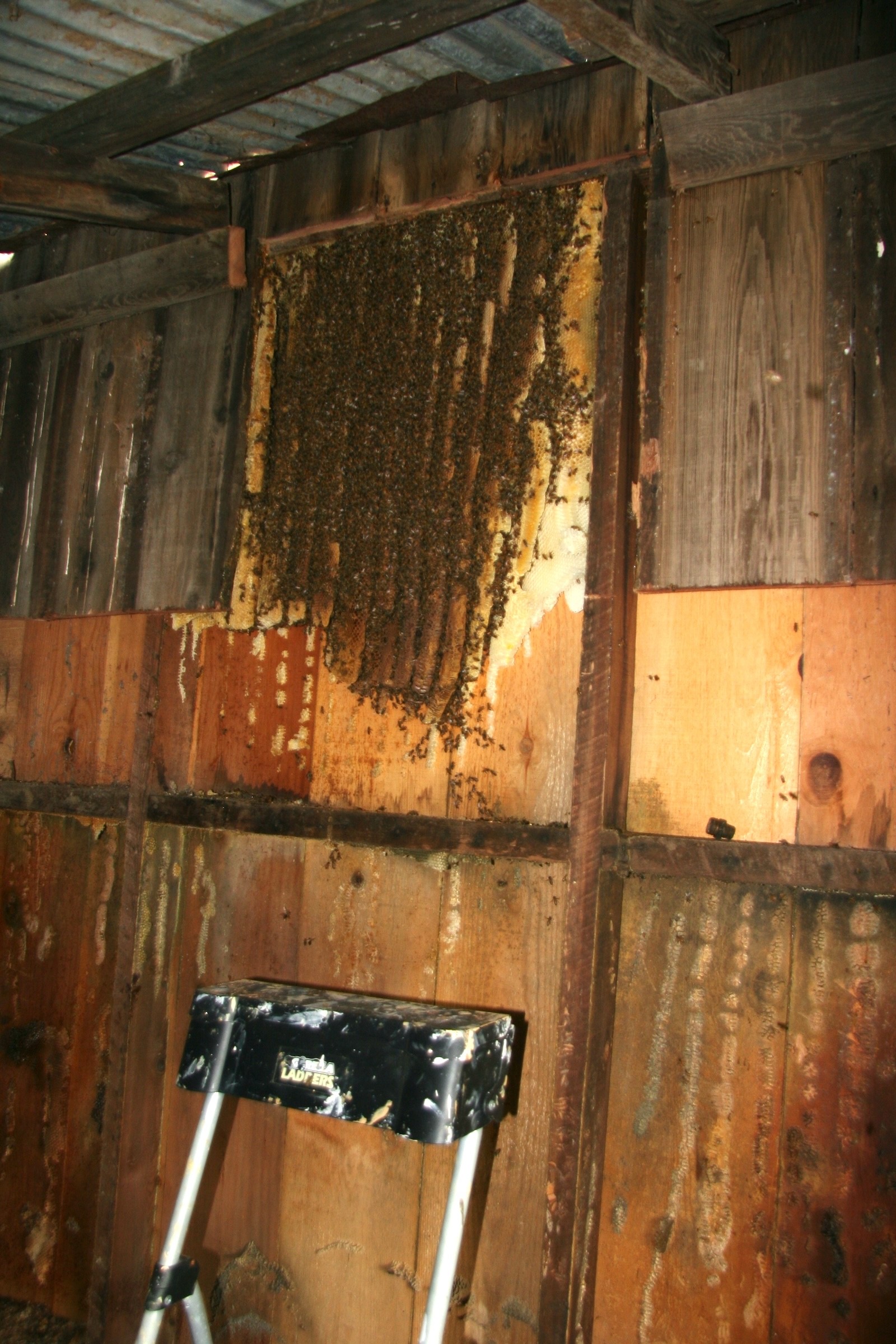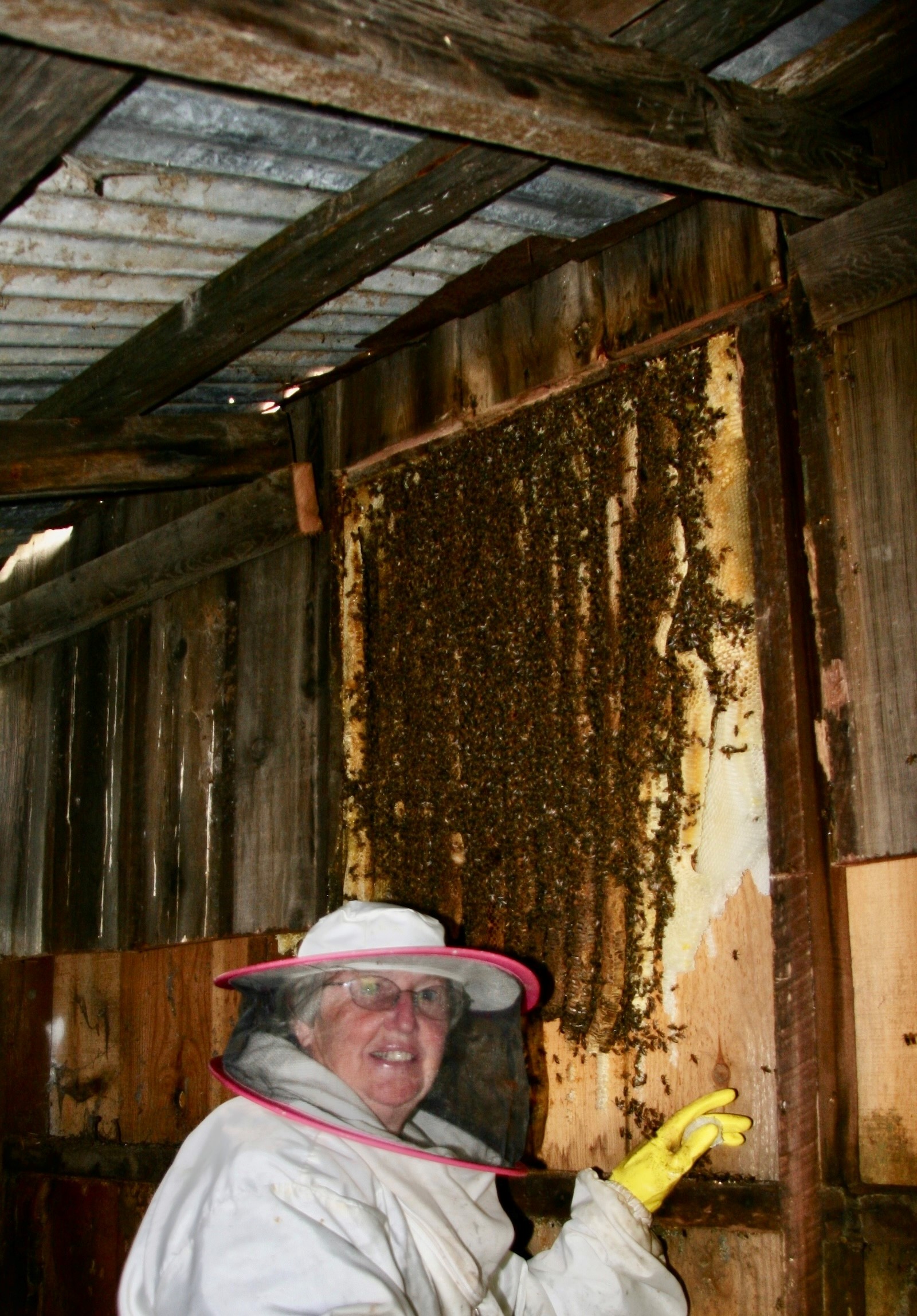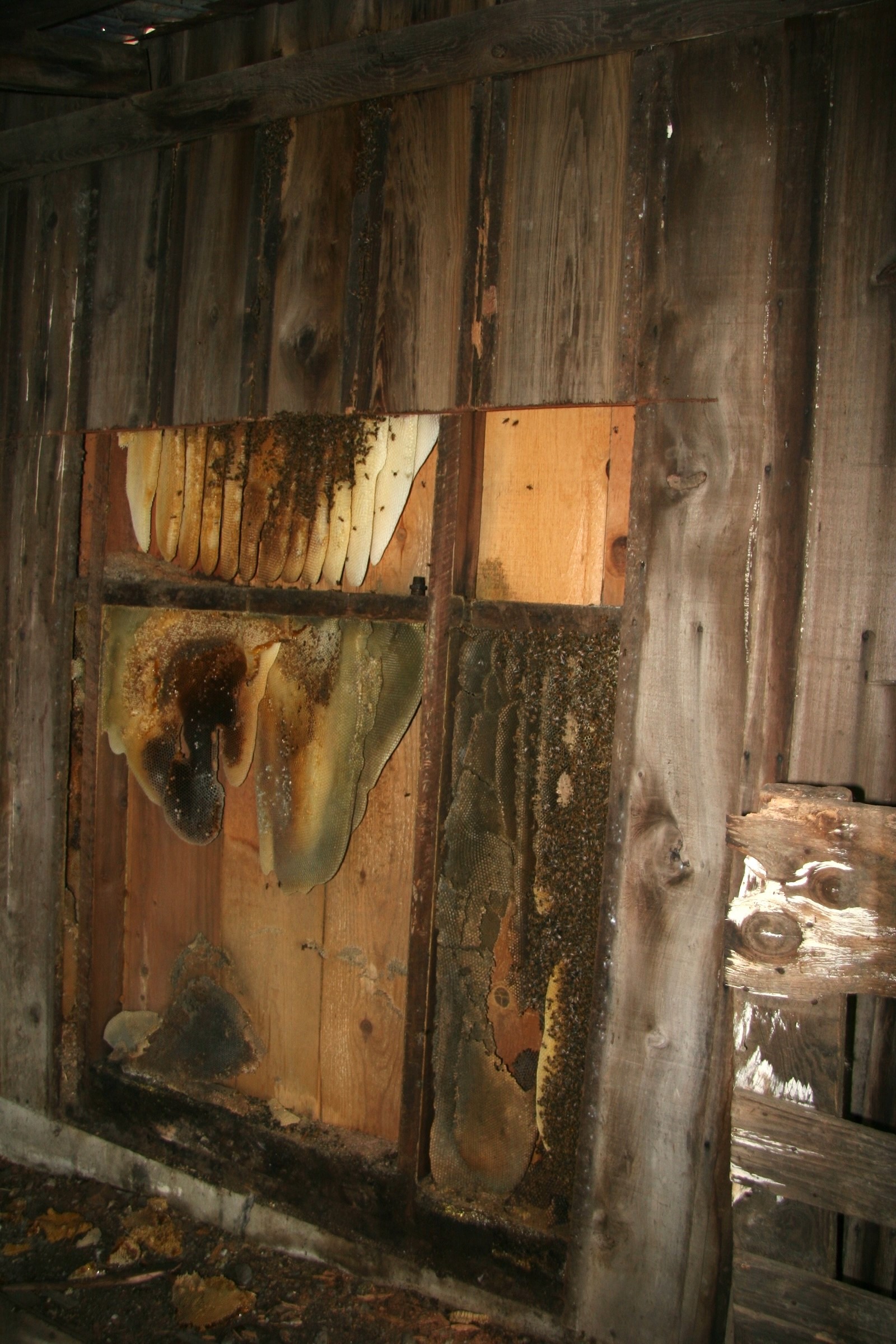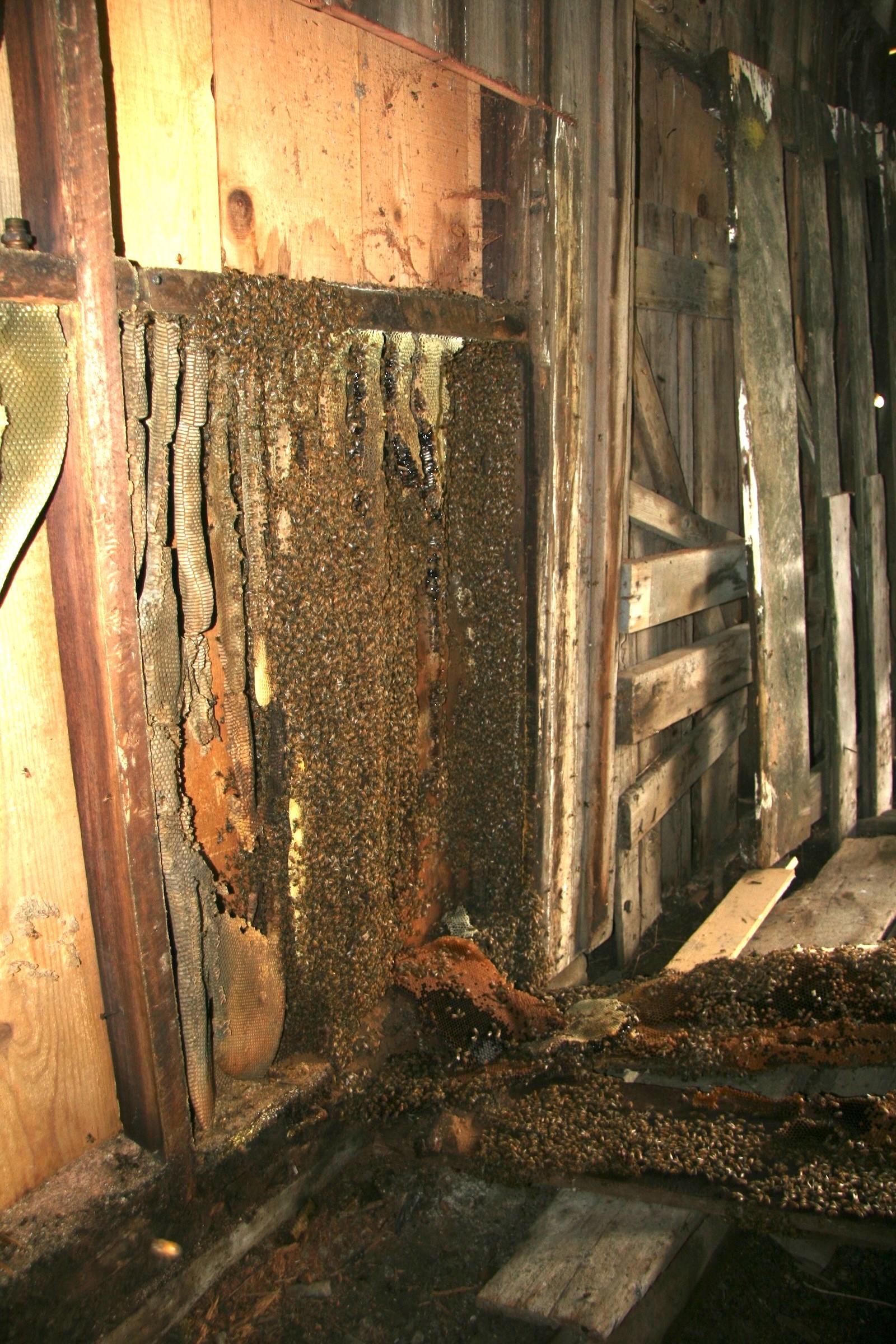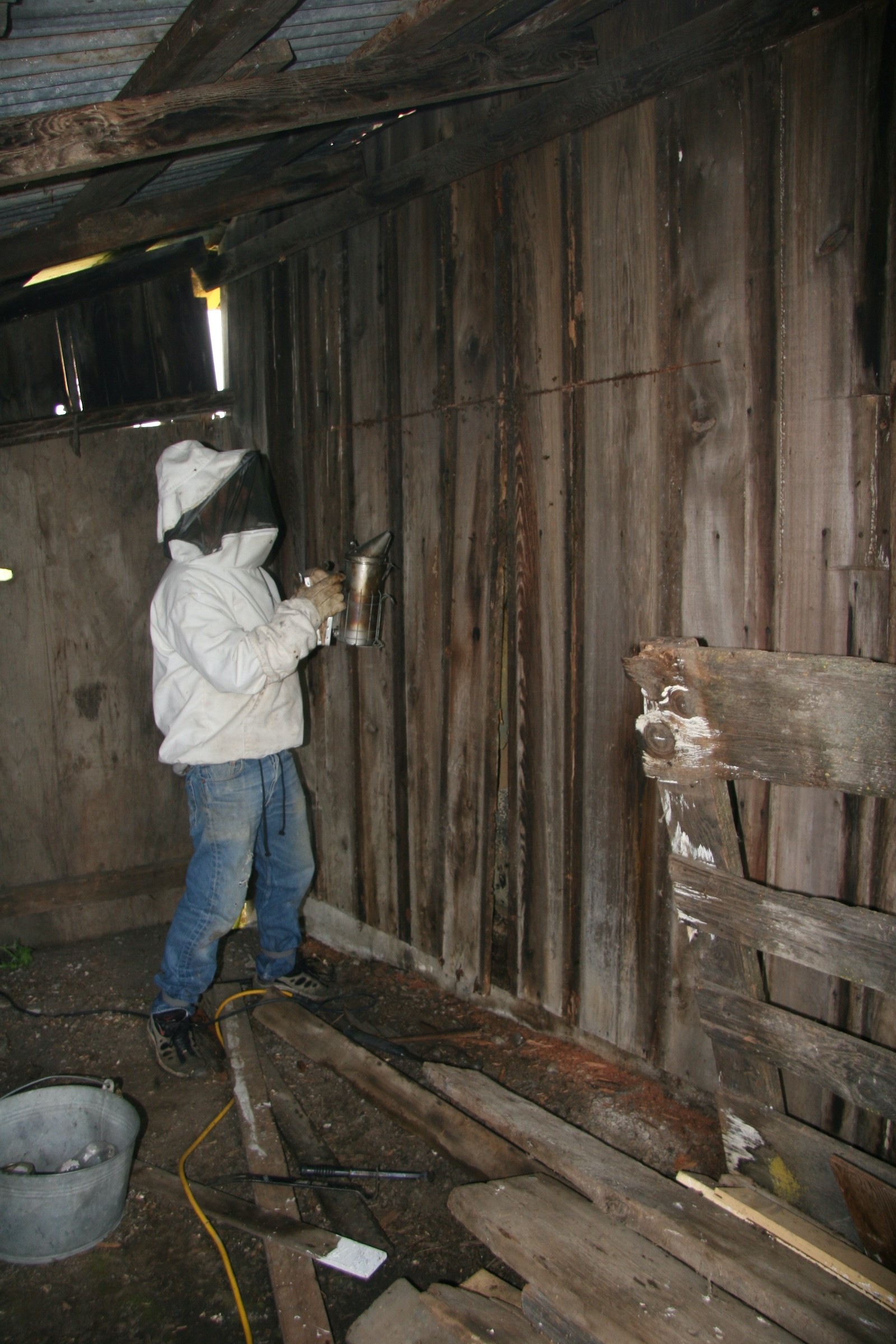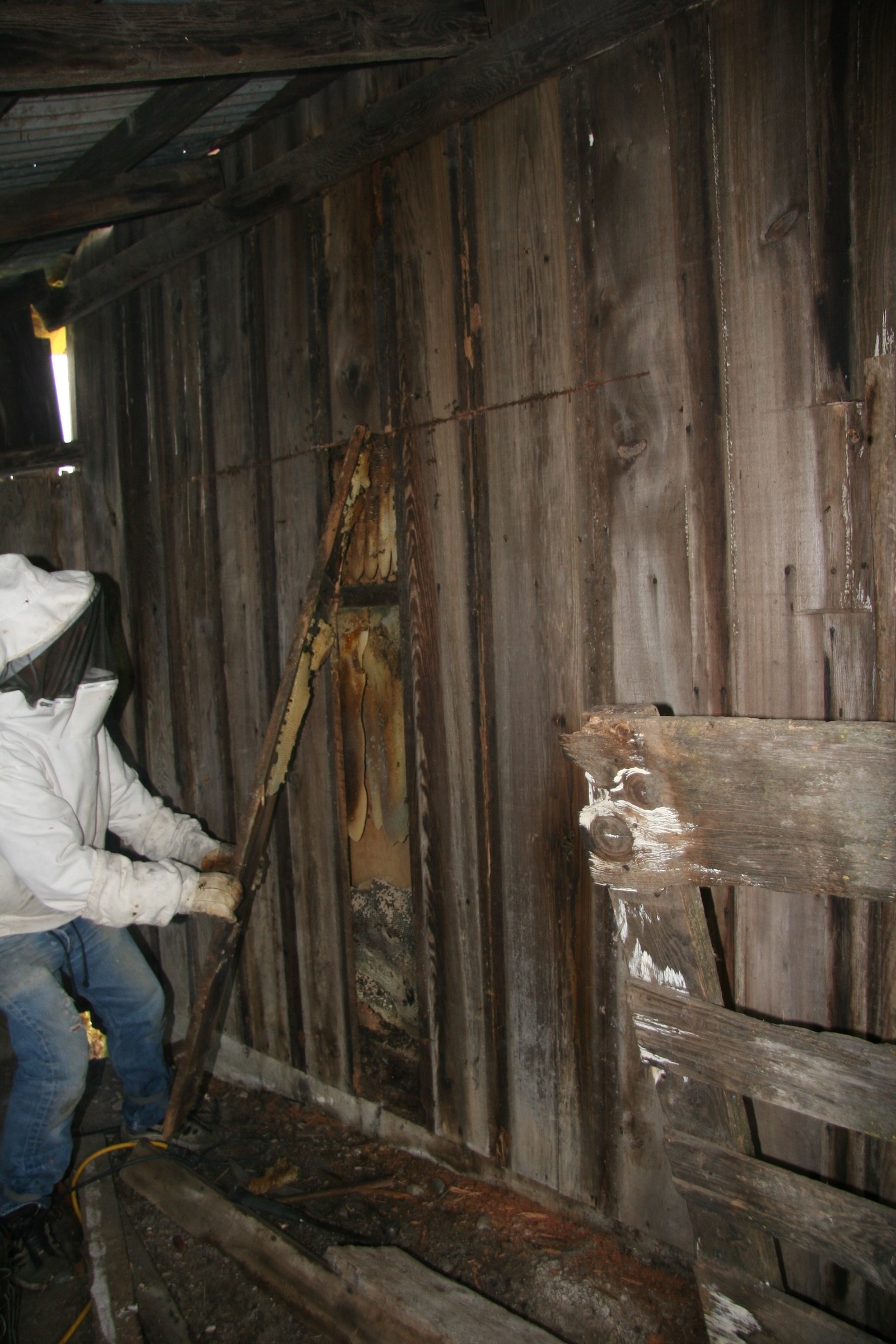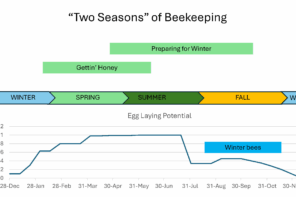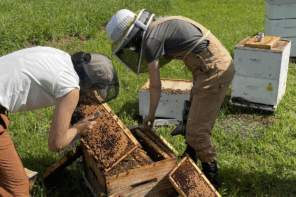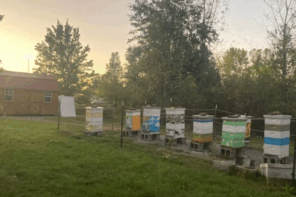By: Ettamarie Peterson
The call came from a contractor who had been hired to refurbish a very old barn up on our little Sonoma Mountain not far from where I live. He told me the barn was over a hundred years old and the owner wanted it to be around for another hundred years. His big problem was that the walls were full of bees. There was no way he could even start working on it without either killing or saving the bees. He asked if I would be able to remove them. Well, my favorite song is the one Annie sings in the musical Oklahoma! “I’m Just a Girl Who Can’t Say No”. I have gotten into some crazy situations especially with bees because I love to say, “Well, I can give it a try.” Mind you, I am a small beekeeper in more ways than one.
Number one because I am only 5 feet tall and number two because I rarely have more than six colonies on my small farm. When this call came, I had been keeping bees for thirteen years and had removed bees from another old building once before. I knew it could be time consuming but since I hate housework and the vegetable garden was in reasonably good shape being early May that was no problem. I had retired from teaching eight years before so May was a good month to fool around, I mean be a good bee rescuer.
Early the next morning I drove up the mountain pass fields of beautiful wild yellow mustard and found the little road that went to the barn. The man was waiting for me, and I am not sure what he thought when a little old lady jumped out of the car. The first thing I told him was that I had absolutely no carpenter skills so he would have to wear my extra protective gear and cut open the walls. Being a good sport and having no idea what he was getting into, he agreed. Our first chore was deciding where the bees were. We could see them coming and going through a couple of holes on the outside wall. I explained that was a help, but we had to figure out just how extensive the nest was. I showed him how to use his ears and hands against the wall. I told him the area where the queen had laid eggs and the young bees were developing would be the warmest. Professional bee removers have heat sensing gadgets to do this, but I am a long way from being a professional at this! He could hear the buzzing easily.
He got out his handy dandy power saw and cut boards where I directed him. Luckily, these bees were not upset by the sawing! We were astounded to say the least when we saw how enormous the combs were. They were long and wide. Some of them were old, abandoned comb from older colonies that had lived in the barn over many years of being a bee sanctuary. There were thousands of bees on the newer comb. Our challenge was just beginning! Before we were finished he had cut a lot of boards off those walls. I told him how I would gently cut sections of comb with food and brood and use large rubber bands to attach them to empty frames to put into the empty bee boxes. We discovered there were two colonies living in the wall.
It was amazing how much comb we removed. The second day of the job I returned with more empty frames and bee boxes and feed sacks. The feed sacks were needed to store all the many sections of old abandoned comb. Those would be taken back to my farm and melted in my solar wax melter. I told him how important it was to remove all the comb, clean the walls as best as possible and seal up all the holes and cracks because the barn would attract more colonies. I explained my “furnished apartment” theory. I tell people bees love to inhabit formerly used bee spaces because it is like moving into a furnished apartment. They especially like it if there are full cupboards with honey.
This was a fun adventure. The man was excited to be part of the bee rescue wearing a bee suit. He asked me to take his photo in the suit so he could show it to his friends and family. I often wondered if he later became a beekeeper. I wouldn’t be a bit surprised because I became a beekeeper after the bees in our own barn wall swarmed. We knew nothing about bees but were fascinated by them after they chewed through the fiberboard, and we could see their huge comb in the wall. My husband and son made a window over it which we covered with a piece of cardboard. When we had visitors, we would take the cardboard off and show them our bees. I showed this set up to the beekeeper that came to rescue the swarm. He told me if I went to the farm store and bought a bee hive, he would bring the bees back to me. He also told me to join the local bee club to learn about bees. I took his advice and that’s how I became a beekeeper thirty years ago.
Ettamarie Peterson has been keeping bees in Petaluma, California for the past 30 years. She is the project leader of Liberty 4-H beekeeping project and has been able to supply the young beekeepers with almost everything they need, including swarms of bees. She is fortunate to have the use of a sturdy old chicken barn for storing donated items and space to use for a workshop.







